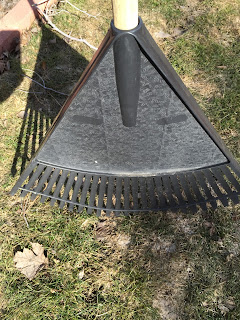 |
| Photo by Donna Duffy |
Snow mold is a fungal disease that appears in late winter/early spring as the snow melts. Due to the prolonged snow cover this winter, there’s a good chance that you may find some patches of snow mold on your turf. I found several large and small patches when I walked around the (finally) snowless yard this morning.
Snow molds do not occur in the home lawn every year, but are most common during years when an early, deep snow cover prevents the ground from freezing. Snow mold is active at temperatures just above freezing in moist conditions. The gray snow mold (Typhula incarnata) most often occurs when snow cover exceeds 40 - 60 days, which pretty accurately describes our Jefferson County conditions for the past couple of months. The damage caused by snow molds is seldom serious. Generally, infected areas are just a little slower to green up.
Snow molds do not occur in the home lawn every year, but are most common during years when an early, deep snow cover prevents the ground from freezing. Snow mold is active at temperatures just above freezing in moist conditions. The gray snow mold (Typhula incarnata) most often occurs when snow cover exceeds 40 - 60 days, which pretty accurately describes our Jefferson County conditions for the past couple of months. The damage caused by snow molds is seldom serious. Generally, infected areas are just a little slower to green up.
 |
| Photo by Donna Duffy |
Take a walk around your property and look for matted patches of grass. You may see a whitish fungus on the patch. Gently rake affected areas of the lawn to promote drying and prevent further fungal growth. Be careful not to rake heavily because the ground is so wet that you may pull up grass roots. By the time you see gray snow mold, the damage is already done so fungicide applications are of little to no benefit at this time.
